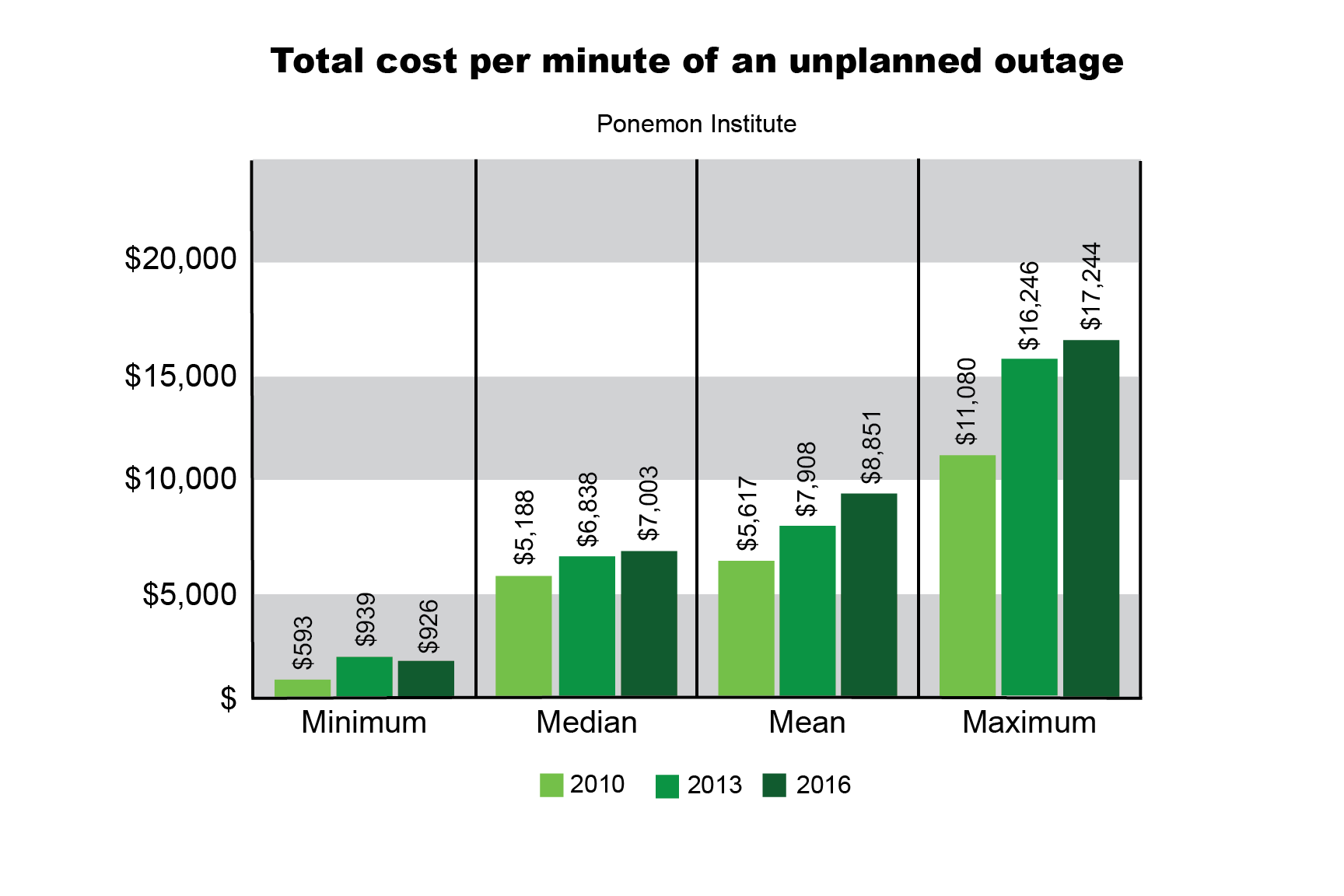
DOWNTIME | 5 MIN READ
According to an IBM study, there are, on average, 4,000 cyber attacks per day in the United States. Of the companies who are attacked, 60% of small businesses close permanently within six months. The financial ramifications for your business add up each minute that your network is down. But how can such a vague notion like downtime cost be calculated? Keep reading to learn what formulas you can use to calculate downtime cost, as well as a few actionable tips you can take within your organization to minimize downtime.
Not enough time?
What is Downtime Cost?
Downtime is defined as a period during which an equipment or machine is not functional or cannot work due to technical failure, maintenance, and other factors.
In manufacturing, downtime is often very straightforward. Machines inevitably have mechanical failures and stop working from time to time, ultimately resulting in periods of downtime. But did you know that downtime can occur in nearly every industry?
Network downtime affects any business that uses the Internet in some capacity to operate. Since almost any business can experience downtime, almost every business can have subsequent downtime costs.
Here's an example of how downtime in the service industry could play out:
Your business is a staffing agency for managed IT services companies. Most of your interactions with customers are through email or online form submissions, but you still have a phone number for employment seeking clients who wish to call.
Your business phone system is connected through the company's Internet connection, so when your company's network goes down, so does every practical form of communication to your clients.
If you are a larger company, you may be able to withstand the occasional downtime, but smaller companies often discover the damage is crippling.
Downtime costs are not necessarily out-of-pocket costs. Instead, they are an estimation of the money lost during the downtime. This includes the obvious business transactions that can't be made (prospects that may go elsewhere or communication that can't transpire effectively, creating a backlog).
But it also includes less tangible costs, like:
- Reputation loss
- Employee salaries - incurred with little work being completed
- Building expenses (a/c, light, security, etc.) during "non-working hours."
How to Calculate Downtime
Recent estimates suggest that downtime costs nearly $10,000 per hour for a retail business, over $5,000 per hour for banks, over $4,000 per hour for media companies, and an astonishing $14,836.80 per hour for insurance companies (Source: Schneider Electric, assuming 40 employees).
Other estimates, like the study commissioned by IBM and conducted by the Ponemon Institute, are even more staggering. Their 2016 report states the average median cost of unplanned downtime is $7,003 per minute, with the cost ranging from $137 to $17,244 per minute. As noted in the figures above, this number can range dramatically based on company size and industry.
The news is better, but not great for small businesses. According to a study by IDC, downtime for small businesses can range between $82,200 to $256,000 per incident. Most small businesses can’t afford downtime of that scale more than once in a single year.
These numbers are staggering, but how are they determined?
The most challenging part of determining these figures for your business is determining the often-forgotten intangible costs, such as the cost of a damaged reputation. Additionally, your business model will often affect these results, as well. For instance, a business that provides most of its services through online channels will experience higher downtime costs.
Use these formulas to assist in calculating the potential cost of downtime for your business:
Downtime Revenue Loss Formula
(Gross Revenue/Total Annual Business Hours) x Percentage of Impact x Hours of Downtime
Downtime Productivity Loss Formula
Number of Employees Affected x Average Cost of Employees Affected per Hour x Hours of Downtime
How to Minimize Downtime
Create and Regularly Test a BCDR Plan

Business Continuity and Disaster Recovery (BCDR) plans are utilized by businesses to ensure that operations run smoothly with minimal downtime in the event of network outages caused by breaches or natural disasters.
Business Continuity plans re-direct resources, establish chains of command, and coordinate shifts in employees so that business operations have minimal interruptions during natural disasters and network outages.
Disaster Recovery plans mainly focus on how to utilize effective IT to quickly recover one's network with minimal downtime and data loss. A few main tenants of Disaster Recovery plans include server and network restoration and backup recovery.
By evaluating departmental workflow to see how processes can be re-directed in the event of downtime and automating data backup, your business can create a solid foundation for a BCDR plan.
RELATED: What is a BCDR Plan? [Tips on Building One]
Educate Employees About Cyber Security
While computers are built to be perfect, the humans using them aren't. Hackers exploit human error to gain access to your network by carrying out phishing attacks.
Phishing, a play on the word "fishing", is a cyber attack that's a form of social engineering.
It involves attempts to gain access to a victim's personal accounts or capture their sensitive data by tricking them into revealing passwords or personal information. The most common form of phishing takes place over email.
If you wish to minimize network downtime caused by cyber attacks, consider educating employees on cyber security best practices, including ways to recognize and avoid phishing scams.
RELATED: Spam vs. Phishing: What's the Difference?
As a Managed Service Provider, we aim to educate our audience on all network protection options available to them.
Managed IT services are just what they sound like− IT services managed by a third-party company. They monitor and protect your network from cyber threats while optimizing business processes, backing up data, and minimizing network downtime.
While a Managed Service Provider (MSP) can implement a BCDR plan to minimize your network downtime, they also employ other tactics.
Once they enter your network, cyber threats such as ransomware can cause extensive downtime as files are encrypted and malware wreaks havoc. An MSP can employ a host of platforms designed to recognize and deter cyber threats.
RELATED: What are Managed IT Services?
By using the downtime cost formulas in this article, your organization can estimate the financial impact that a network outage could have on your business.
For more cyber security-related content, follow our blog!
Want to Learn More?
How Much Do Managed IT Services Cost?
Phishing Tips: A Simple Guide to Avoiding Malicious Emails
Superior Solutions: for IT on a Budget
Why Small Businesses Are More Prone to Cyber Attacks
Posted by Daniel Gray

Daniel has a passion for educating and helping people and has spent over a decade in the education and office technology industries. He has a Bachelor's in Education from the University of West Georgia and an MBA from the University of Georgia. Daniel has been the lead writer at SOS since 2017 and specializes in managed IT services, copiers and printers, and business phone systems. He lives in Atlanta and has a goofy greyhound named Ticker.

